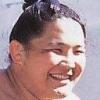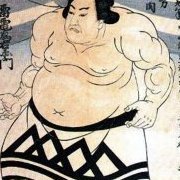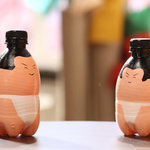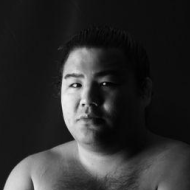Search the Community
Showing results for 'Shunjuen'.
Found 44 results
-
Several things were brought up at the Kyushu rikishi-kai on the 31st, mostly aiming to improve the health of the rikishi http://www.hochi.co.jp/sports/sumo/20171101-OHT1T50002.html While Kakuryu wants all sekitori to pray for health together at the new Year shrine visit and get purified by the priests there, Hakuho's plan is more practical: The check-up where Shotenro's cancer was detected was at a doctor Hahuho introduced him to, so Hakuho has a strong case here for demanding such thorough human-dock check-ups and PET scans made obligatory 2 times a year: he also called for improved health support in general for the rikishi. Another demand was for better food and lodging during the jungyo tour - bigger beds - and the food is worlds away from the healthy chanko at the heya. Another subject was the demand for rikshi seats at the basho - the family members of many sekitori have problems to get seats now - like everybody else, apparently nothing is reserved for them so far. The rikishi-kai of all sekitori was installed in 1932, after the Shunjuen Incident, where the rikishi walked out on the kyokai to demand better conditions NSK pics from the rikishi-kai o o o o
-
Takenosato left the NSK in the Shunjuen incident, so his Kyokai-gai status can be extended back to 1932.02. In addition, ja.wiki lists (unreferenced) results in between that and his earlier juryo appearances. (BTW, I think 1931.03 should be changed from 0-0 to 0-0-11.) 1931.05 Ms2w 0-0-6 1931.10 Ms2w 2-4 1932.01 Ms18w The article also has pre-juryo results for 1926-1930, but obviously without a source given these are somewhat (more) problematic.
-

Heya A-Z with (partial) pictorial history
Naganoyama replied to Naganoyama's topic in Ozumo Discussions
(By complete coincidence given it has just been mentioned elsewhere) I have added a section 'Shunjuen Incident' accessible via Special Categories. -
The Shunjūen Incident
-
I don't like it - again. Sure, perhaps Minato just wanted to say that is it yet to be scheduled. But, considering that the relationships between the two is evidently at an all-time low, it can be easily understood in another way. Like, Minato does not want to have anything to do with Ichinojo from now on, including cutting his topknot. I am unfortunately just not as knowledgeable in sumo as I'd like to be. How much common it is not to have a danpatsu-shiki - or anyway having one without your stablemaster? I know that Kotomitsuki and Sokokurai didn't have one when they were expelled, but it was because they hoped to be reintegrated one day - and Sokokurai did. Also, Kotomitsuki had his last cut made by Takanohana, but he held a private ceremony so he could do whatever he wanted. Aside from that, however, I understood that a danpatsu-shiki, even in a low-key manner (Chiyootori style), is always held. Both Asashoryu and Harumafuji, who were basically kicked out of sumo, had theirs. Sure, them both were very popular Yokozuna, so it was a great event anyway. Back to my main question, there is any precedent to not hold a danpatsu-shiki outside of very radical walkouts (e.g. 2011 betting scandal, the 1932 Shunjuen incident, etc)?
-
After the spate of unfavourable reports and developments that started half a year ago, the only thing that really feels surprising to me about Ichinojo's intai here is the specific timing. I hope he finds contentment outside of sumo, preferably not C2H5OH-based. Kasugao was the last juryo yusho winner before the yaocho scandal broke, as part of which he "retired". And Kaneminato was the last champion before he joined the Shunjuen mass walkout in 1932, although he returned to the Kyokai a year later.
-
The Onosato monument at the Kashima shrine in Fujisaki, Aomori will definitely get more visitors now that the shikona is used by Nakamura. His motto was "The body and the power have a limit, but not the technique". He was one of the main rebels of the shunjuen incident and left the sumo kyokai, they formed another in Osaka. When that collapsed, he collapsed as well and died a month later. http://mitinoku.biz/hist_walk/hist_aomori/?p=997 the grounds have a dohyo as well o The stone monument in his honor was erected in 1960 for his 23rd death anniversary and since then in August the Onosato-cup kids tournament takes place there http://www.fujisaki-kanko.jp/event/sumo.html
-
That was long ago, Shibatayama several basho before declared that they won't cancel anymore. It's Shunjuen for the incident
-
BS is besseki, other place. You can see it on the Japanese side. The kyokai made two banzuke then, one for the returners after the Shunjuen incident. They are those listed as BS.
-
Before Futabayama, Shimizugawa also had won the yusho in his Sekiwake debut. As a result of the Shunjuen Incident he couldn't make his debut at the rank in Haru 1932. So the query function didn't work here. I was informed about it when NHK showed this: (+) Wakatakakage is also the 3rd makuuchi champion from Fukushima pref. after Tokitsuyama and Tochiazuma I
-
2+ basho-to-basho changes at the ozeki rank, modern era: 1927.03 -> 1927.05 (±0): > O Hitachiiwa > S Tachihikari 1930.03 -> 1930.05 (±0): > O Tamanishiki > S Noshirogata 1930.10 -> 1931.01 (±0): > O Noshirogata > i Toyokuni 1932.10 -> 1933.01 (-2): > Y Tamanishiki > S Noshirogata 1936.05 -> 1937.01 (+2): > O Futabayama > O Kagamiiwa 1937.05 -> 1938.01 (-2): > Y Futabayama > i Shimizugawa 1939.05 -> 1940.01 (±0): > O Haguroyama > i Kagamiiwa 1940.05 -> 1941.01 (+2): > O Akinoumi > O Itsutsushima 1941.05 -> 1942.01 (-1): > Y Haguroyama > O Terukuni > S Itsutsushima 1942.05 -> 1943.01 (-1): > Y Akinoumi > Y Terukuni > O Nayoroiwa 1948.10 -> 1949.01 (-1): > Y Azumafuji > O Masuiyama > S Shionoumi 1951.01 -> 1951.05 (+1): > O Yoshibayama > O Kagamisato > S Saganohana 1951.05 -> 1951.09 (-2): > Y Chiyonoyama > i Shionoumi 1955.09 -> 1956.01 (+2): > O Matsunobori > O Wakanohana 1961.09 -> 1961.11 (-2): > Y Taiho > Y Kashiwado 1962.05 -> 1962.07 (+2): > O Tochinoumi > O Tochihikari 1970.01 -> 1970.03 (-2): > Y Kitanofuji > Y Tamanoshima 1972.09 -> 1972.11 (+2): > O Wajima > O Takanohana 1974.01 -> 1974.03 (±0): > O Kitanoumi > i Kiyokuni 1975.11 -> 1976.01 (±0): > O Mienoumi > S Kaiketsu 1977.01 -> 1977.03 (+2): > O Wakamisugi > O Kaiketsu 1981.01 -> 1981.03 (±0): > O Chiyonofuji > i Takanohana 1986.07 -> 1986.09 (±0): > Y Futahaguro > O Hokutoumi 1987.05 -> 1987.07 (±0): > Y Hokutoumi > O Konishiki 1987.09 -> 1987.11 (±0): > Y Onokuni > O Asahifuji 1993.01 -> 1993.03 (±0): > Y Akebono > O Takanohana 1994.01 -> 1994.03 (+2): > O Takanonami > O Musashimaru 2000.05 -> 2000.07 (±0): > O Miyabiyama > S Takanonami 2000.07 -> 2000.09 (±0): > O Kaio > S Musoyama 2004.11 -> 2005.01 (-2): > S Tochiazuma > i Musoyama 2007.05 -> 2007.07 (-2): > Y Hakuho > i Tochiazuma 2017.01 -> 2017.03 (-2): > Y Kisenosato > S Kotoshogiku 2019.03 -> 2019.05 (±0): > O Takakeisho > S Tochinoshin 2019.09 -> 2019.11 (±0): > O Takakeisho > S Tochinoshin 2021.07 -> 2021.09 (-2): > Y Terunofuji > S Asanoyama Plus one asterisked case: 1931.10 -> 1932.02 (±0): > O Musashiyama > i Onosato Musashiyama got promoted for the January 1932 tournament which ended up not happening due to the Shunjuen mass walkout of rikishi. Onosato retired as part of that and was off the banzuke for the next basho that actually took place.
-
The bullshit politics, to my knowledge, were that his abrasiveness was particularly upsetting to some people from the dominant Dewanoumi group who thus did their best to block his promotion. The Shunjuen incident (in the year after his series of yusho) was a big hit to their power base since it was primarily supported by rikishi from their group, and Tamanishiki, a top ozeki regardless of the non-promotion, came to be seen as a big name the Association needed to show gratitude to for having stuck with them. He would soon become head of Nishonoseki-beya while still active with the explicit plan of building a stable group to rival Dewanoumi and ultimately break their supremacy.
-
Question: do you mean that he had "bullshit politics", or did the Sumo association use "bullshit politics"? I know he was around during the Shunjuen Incident; is that what was involved?
-
There has been at least 1 kinboshi every year from 1988 to 2020 except for 2011. So, for Heisei to present, the longest gap I know of is between Day 2 Kyushu 2010 Kisenosato d. Hakuho. Next was Day 7 Natsu 2012 Toyohibiki d. Hakuho. Sorry for a rather late reply, I didn't see these posts until the thread came back up today. According to my files, the longest periods without any kinboshi are as follows: 1931 Haru, Day 4 (Yamanishiki defeated Miyagiyama) to 1933 Haru, Day 1 (Dewagatake defeated Tamanishiki) 80 honbasho days passed during this kinboshi-less spell which straddled the turmoil of the Shunjuen incident, but kinboshi weren't possible for much of it. Having given up four kinboshi in the opening four days, 36-year-old Miyagiyama fought and defeated three more Maegashira but retired after the basho to leave no Yokozuna on the banzuke until Tamanishiki's promotion. 1992 Haru, Day 2 (Kushimaumi defeated Hokutoumi) to 1993 Haru, Day 6 (Kyokudozan defeated Akebono) A similar situation occurred in the early 1990s, Hokutoumi's final kinboshi preceded his retirement and began a spell of 93 honbasho days without kinboshi. Again, there were no Yokozuna until Akebono's promotion, and he managed to beat four Maegashira before giving up his first kinboshi. 2010 Kyushu, Day 2 (Kisenosato defeated Hakuho) to 2012 Natsu, Day 7 (Toyohibiki defeated Hakuho) Unlike the earlier stints, this period of 124 honbasho days saw Hakuho ever-present. After Kisenosato put an end to his overall winning streak attempt, the lone Yokozuna repelled an astonishing 61 Maegashira opponents before Toyohibiki's greatest moment brought that streak to an end too. 2020 July, Day 1 (Endo defeated Kakuryu) to ? With Kakuryu gone and Hakuho expected to sit out the Natsu basho, the current kinboshi-less stint will extend to 89 honbasho days, during which the latter has so far defeated 10 Maegashira opponents.
-
Ossu, I'm curious as to how often rikishi have run away from their stables. I recall that 6 Tongans ran away from their Heya in 1976 after a dispute with the stablemaster who took over after the death of the oyakata that recruited them. I'll have to ask our resident ex-rikishi Minaminoshima for details as I think his dad was involved too. In about 1991 Kyokutenhō, Kyokushuzan and three others ran away and sought refuge in the Mongolian embassy however Kyokutenzan persuaded them to return. In January 1932 there was the Shunjuen Incident where dozens of rikishi walked out and only 11 remained in the top division. I know a lot of individuals have run away so it's not a rare occurrence. Saito from Tokitsukaze eventually ended up having his life brutally taken away from him after he was persuaded to come back several times. One of the kids in a documentary about a decade ago did a runner and there are countless tales of rikishi wanting to chuck in the towel. A rikishi once told me that a former university sekitori was forced to quietly resign for getting frisky with his tsukibito in the hot tub. It was alleged that the victims ran away after they were made to bob for plums (if you catch my drift) I know that it used to be very common for rikishi to sneak out for some fun at night until the stablemasters got better CCTV. The Musashigawa beya boys found a blind spot next to the dohyo so they would dive out of the window. Are there any other notable incidents that our sumo history buffs recall?
-
A video about sumo history from the Sakurai-city tourism association - the city that claims to be the origin place of sumo, with the sumo shrine and the location of the bout of NominoSukune and TaimanoKehaya. The video later has the focus on Osaka sumo and the Tozaikai. Some points I found interesting: Sumo in the Heian period, when there was no dohyo, was held as a set with archery (what is now kyudo) and riding (while shooting the bow, what now remains as yabusame): quite similar to the Mongolian Naadam. The bow twirling ceremony (and the mawashi) goes back to Heian times, thus has nothing to do with a yokozuna. Sumo had been a fight to the death (like with NominoSukune) and only then became a Shinto ceremony: sumo as shinji, which the YDC and the like are so eager to point out now. But in the Kamakura period, sumo became again mainly just a martial art, war training for the samurai. Osaka had a small kokugikan at first, after the Shunjuen incident, there was no Osaka basho anymore - the rebel sumo organization was located in Kansai. The dai-NSK persuaded one rikishi after the other to come back. The predecessor of the tozaikai (tamarikai in Tokyo, the people on the best cushions around the dohyo) then planned to build the biggest sumo hall ever: the Osaka grand kokugikan had room for 2.5 times the number of spectators of the present kokugikan - it was only used for 7 Osaka basho, the first was only a semi-basho, June 1937, without effect on the banzuke, only on the mochi-kyukin. Ticket prices then: the 4 person A masu seat box that at the moment (soon to rise) costs 45200 yen was 5.5yen, 3rd class seats 1yen, 4th class 0.5yen - in the yen, the whole history of inflation is preserved.
-
Sanspo posted a list of all hiramaku yusho winners who were not sanyaku the next bsaho one could get most of the list with a DB query http://sumodb.sumogames.de/Query.aspx?show_form=0&showhighest=on&form1_rank=m&form1_y=on&form2_rank=m with a few differences: one can spot the one who didn't make it to sanyaku at all, also after the yusho: Orochiyama and Aragawa is missing from the list: the DB shows him as promoted to komusubi, but sanspo as dattai 脱退: he went out of the kyokai with half the sekitori at the shunjuen incident. After his return, he made it to sanyaku eventually.
-
http://sumodb.sumogames.de/Banzuke.aspx?b=193301 They are the rikishi rejoining the Kyokai after the Shunjuen incident, a walkout starting January 1932 involving 48 of the 62 sekitori.
-
The pics are mainly from a Withnews gallery of Asahi shimbun pics. More incidents at http://www.jiji.com/jc/v4?id=sumo-jikenshi201712210001 1932 the Shunjuen incident with a group of rikishi separating from the then Dai-NSK 1947 Futabayama (Tokitsukaze-oyakata) gets arrested after he turned to one of the new cults - the Jikouson incident: he tried to protect the founder of the sect from police arrest 1949 Maedayama forced to retire because he watched a baseball match during kyujo 1965 Wakahaguro fired, Kashiwado and Taiho questioned by the police for bringing guns to Japan from an US jungyo 1982 Kitanofuji (Kokonoe-oyakata) got an oyakata rank demotion for being acquainted with yakuza 1987 Futahaguro intai after beating the okami-san etc. 2006 Nagoya, Roho suspended for 3 days after attacking a cameraman
-
There's precedent for K -> O promotion. http://sumodb.sumogames.de/Query.aspx?show_form=0&form1_rank=K&form2_rank=O Three of the last four (in reverse chronological order), all of whom ended their careers as Yokozunae: 1st: http://sumodb.sumogames.de/Rikishi.aspx?r=3801 (1937 - 1938) M12E 7-4, M5E 9-4 > K1E 11-2 J - They had 4 Y and 1 O on the banzuke, so might have wanted another O to balance things out. 2nd (Musashiyama): http://sumodb.sumogames.de/Rikishi.aspx?r=3743 (1931) K1W 10-1 J, K1E 10-1 Y, K1E 8-2-1 - Two 10-1 scores were not enough to force a HD sekiwake promotion for some unknown reason (they even had a HD komusubi at the time). 4th: http://sumodb.sumogames.de/Rikishi.aspx?r=3645 (1914 - 1915) J3E 7-0 Y, M12E 8-1-1 J, K1E 9-1 J - They had 2 Y and 3 O so I guess they just figured he deserved it. http://sumodb.sumogames.de/Rikishi.aspx?r=3645 I'm going to go with san'yaku being san'yaku, regardless of title, and that any san'yaku can be directly promoted to Ozeki or Yokozuna with a sufficient record. At least historically. The odds of getting two yushos (or "and yusho equivalent", these days) and a promotion to Yokozuna without first hitting Ozeki are highly unlikely. That may even be why these Komusubi were directly promoted to Ozeki - to avoid the possibility of having to promote a komusubi or sekiwake directly to Yokozuna. Musashiyama's promotion was simultaneous with the Shunjuen incident, which may complicate the reasons for that particular promotion. Followup: No one has ever had two yusho and/or yusho-doten at komusubi and/or sekiwake rank two tournaments in a row (jun-yusho is another matter entirely). I stand by the above analysis. http://sumodb.sumogames.de/Query.aspx?show_form=0&form1_rank=K,S&form1_y=on&form1_yd=on&form2_rank=K,S&form2_y=on&form2_yd=on
-
Goeido this year was the first from the Osaka area after 86 years to win the yusho. The one from the past looks interesting: he left university to enter sumo (in 1917!) and in 1932 left the then Dai-NSK to join the Shunjuen rebels - Yamanishiki https://ja.wikipedia.org/wiki/山錦善治郎 http://www.sankei.com/west/news/161226/wst1612260040-n1.html What really strikes me as odd are his banzuke movements - I wonder what kind of promotion rules they had at the time. 11 bouts, so 6-5 should be kachi-koshi. He gets promoted to sekiwake from m1 with that and next demoted from sekiwake to m1 again with the same result. But the most stunning: he stays at the same m5e rank after his 11-0 yusho: apparently they didn't have a banzuke conference after each basho.
-
I don't get your point here. Why do you think this not comparable? 69 consecutive wins means Futabayama has faced 69 aites in a row on the Dohyo and beat them all. No matter whether he has achieved this within 8 months or within 3 years. And mathematically the numbers (69 > 63) are easily comparable.The only valid arguement against a comparison could be that in Futabayama's era many top division wrestlers had just gone on strike (the so-called "Shunjūen Incident"). Ganzohnesushi You see 69 and 63 and say that's close. I see 8 months and 36 months and think that's different. Advantages and disadvantages, but definitely different.
-
I don't get your point here. Why do you think this not comparable? 69 consecutive wins means Futabayama has faced 69 aites in a row on the Dohyo and beat them all. No matter whether he has achieved this within 8 months or within 3 years. And mathematically the numbers (69 > 63) are easily comparable. The only valid arguement against a comparison could be that in Futabayama's era many top division wrestlers had just gone on strike (the so-called "Shunjūen Incident"). Ganzohnesushi
-
The other reason besides the merger is that it also matches the start of the Showa era (which began December 25, 1926) - that's just a fortunate coincidence though, AFAIK the plans for the Tokyo-Osaka merger were in the works since 1925. Anyway, "modern era" is a phrasing I'm simply taking from the banzuke topics - where those say "modern era" in the English version it typically reads "since Showa" in the Japanese ones. I do agree that 1927 isn't always a good start for statistical work - in many ways, modernity only started to set in after the 1932 Shunjuen incident when they were forced to actually change a few important things, not just swallow up Osaka and double the number of tournaments as they had done in 1927. Edit: Way too late after I walked away from a half-complete post for a bit...
-
That's a good one, too, and would have been my follow-up question. I only discovered it via ja.wiki this afternoon, actually, while checking if my actual trivia question is covered there. (It's not. ;-)) But no, that's rare but not unique to Naminohana. As far as I can see 7 rikishi have managed that in the modern era: Takanobori - emergency promotion from M15 to K due to the Shunjuen mass walk-out Fudoiwa - end of WWII, only one 7-bout basho as upper maegashira before reaching sanyaku Kitanofuji - wouldn't happen today; 13-2 from M10 in his makuuchi debut, highest opponent only M1 Maenoshin Misugisato Naminohana Jokoryu (!) - assuming he gets promoted No 100% clear-cut definition of joi-jin, so I wouldn't even know how to verify that for all other rikishi. However, the fact that he didn't get to spend much time in the joi-jin ranks probably helped him "achieve" Y. (For those wondering about his quick fall from grace: elbow injury in a Kaio bout, says ja.wiki...)













